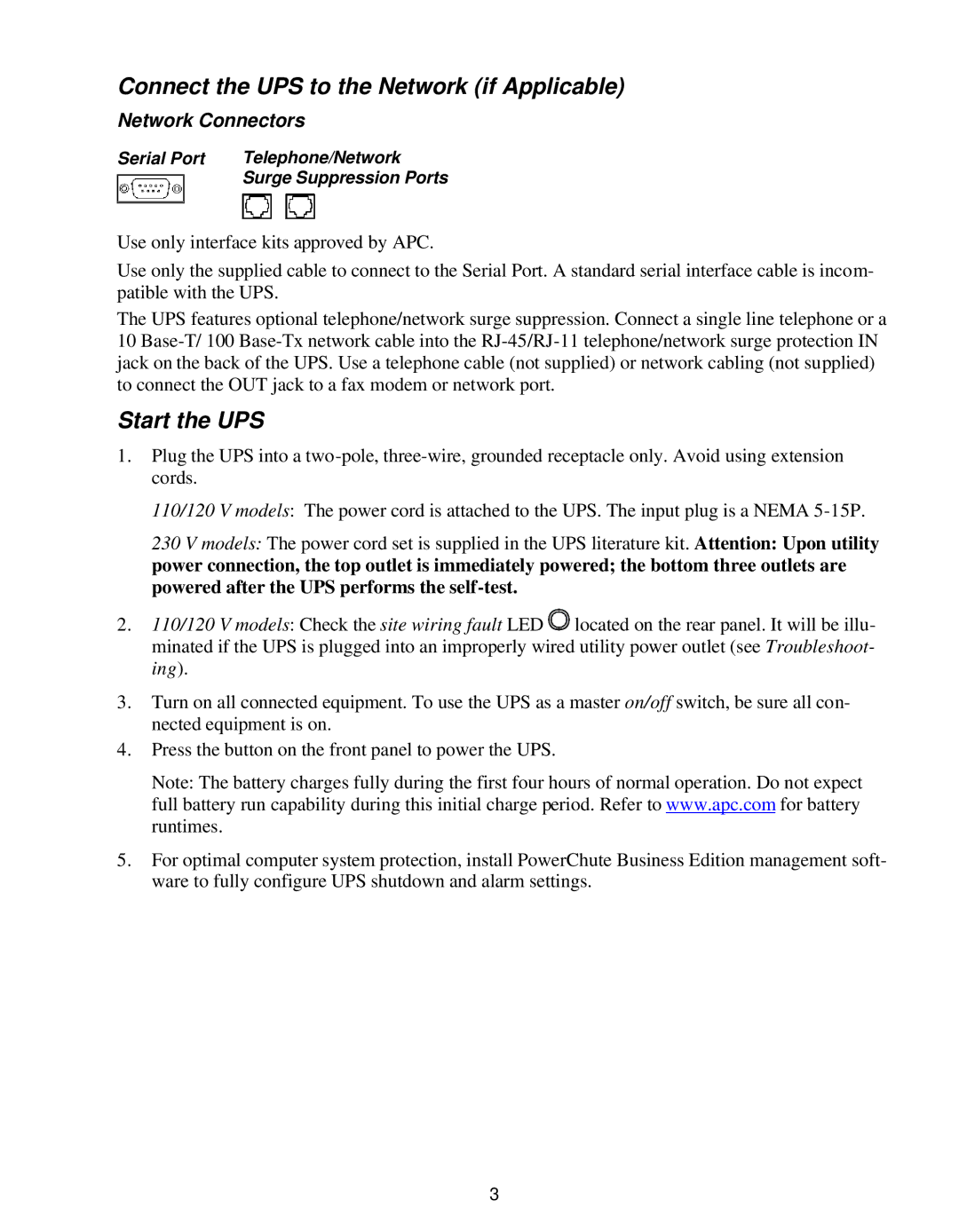620 VA, 420 VA, 110 Vac, 120 Vac specifications
APC (American Power Conversion) is a prominent name in the power management industry, known for its innovative solutions that provide reliable power protection to various electronic devices. Among its range of products, the APC 120 Vac and 110 Vac series, typically offering 420 VA to 620 VA capacity, stand out due to their impressive performance and features tailored to meet the needs of both home and office settings.The key feature of these APC units is their ability to provide uninterruptible power supply (UPS) for sensitive electronics. By converting incoming power to a stable and consistent voltage, they protect devices from surges, spikes, and other power irregularities that can cause data loss or equipment damage. With a backup power capability, these UPS units ensure that critical hardware like computers, servers, and networking equipment remain operational during outages, allowing users to save their work and shut down systems safely.
The APC units are designed with advanced technology, including line-interactive topology. This technology allows the UPS to provide efficient voltage regulation and can automatically adjust the output voltage, ensuring that connected devices receive optimal power quality. Furthermore, with a fast response time, these units switch to battery mode instantaneously during power disturbances, minimizing any interruption.
In terms of characteristics, these models typically come equipped with multiple outlets, often incorporating surge protection that offers layered protection for connected devices. LCD displays provide real-time information on battery status, load capacity, and estimated runtime, making it easier for users to monitor the system. The compact design allows for flexible placement, whether in a home office or a data center.
Efficiency is another hallmark of the APC series, with energy-saving features that not only help in reducing operating costs but also align with environmental sustainability goals. Many models include user-replaceable batteries, simplifying maintenance and extending the life of the unit.
In summary, APC 120 Vac and 110 Vac UPS units with 420 VA to 620 VA capacity deliver robust power protection through their innovative design and technology. With features focused on reliability, efficiency, and user convenience, they represent a valuable investment for anyone needing uninterrupted power supply for their critical electronic equipment.
